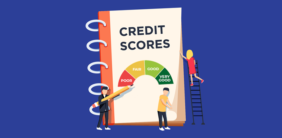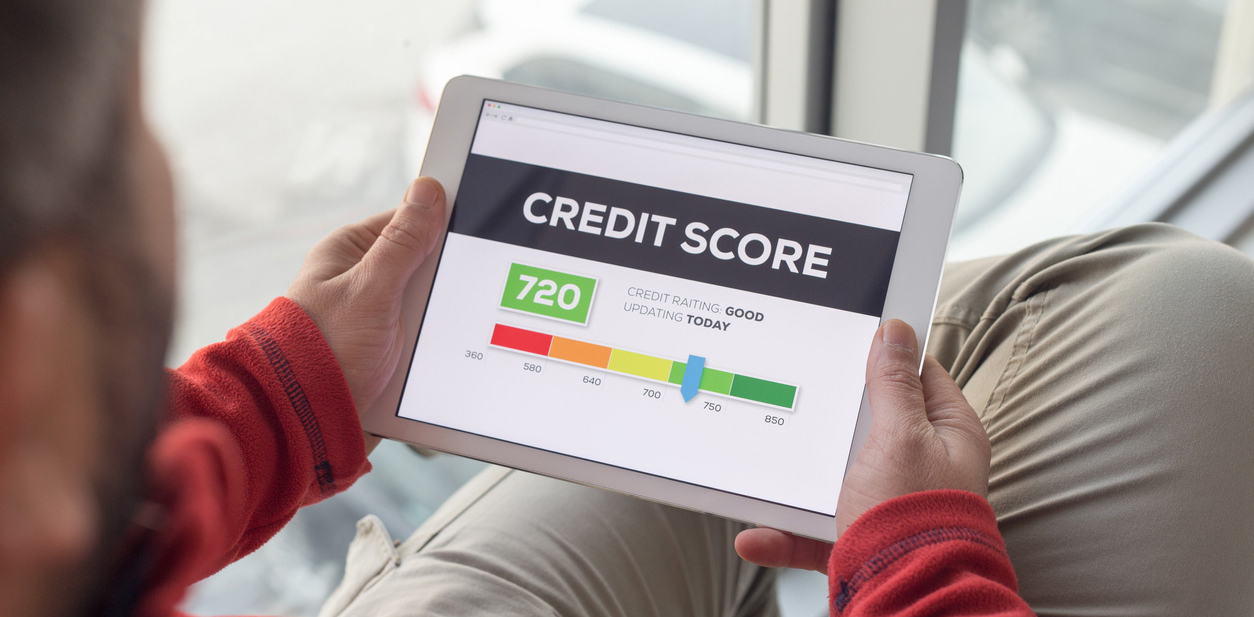Managing your money involves creating a plan for your money. That means creating a budget.
While at least 8 to 10 Americans say they have a budget, around 25% say they still don’t have enough savings. A budget can be used as a tool to help you save, pay off debt, and meet other financial goals. In this budgeting 101 guide, we’ll help you break down how budgeting works and how to make it successful for you and your goals.
Budgeting 101: What Exactly is a Budget?
A budget is a spending plan that lays out exactly how you’ll manage and spend your money. Most people budget for the month, but you can also budget weekly, quarterly or annually depending on your preference and financial situation.
A budget is something that you create based on your goals and needs. Essentially, it gives you the opportunity to control what you do with your money instead of spending with no real plan. Budgeting can also help you save money or redirect funds to other important goals. For example, maybe you think you’re spending $300 per month on groceries, but you track your expenses and realize you’re actually spending $500. You can budget to spend $300 and plan exactly what you’ll do with the $200 you’d be saving.
There are no hard-set rules for creating a budget, but you should start by listing out your income and expenses. Most people break down their expenses into two main categories: fixed and variable.
Fixed vs. Variable Expenses
Fixed expenses represent those costs that don’t tend to change each month. This may include things like your rent or mortgage payment, car payment, daycare bill, etc. Variable expenses are costs that can fluctuate month to month.
Expenses like groceries and dining out, household supplies, and utilities can all be variable expenses. Both types of expenses are important and should be included in your budget.
If you notice that some variable expenses seem high, you can lower these budget categories and adjust your lifestyle accordingly. Spending too much money on gas? You can try to limit the number of errands you run each week or use your car less during warmer months and bike or walk.
Fixed expenses can also be lowered and/or closely managed too but often on a more annual basis. Let’s say you have an expensive car insurance premium. You can always shop around for better car insurance rates and switch companies. That way, you’ll save all year round by just making one change.
How to Create a Budget Step-By-Step
Before you create a new budget or update your existing one, it’s important to have a clear goal in mind since this can motivate you along the way. Ask yourself why you want to create a budget in the first place.
- Are you tired of not knowing where your money is going?
- Are you looking to save more so you can stop living paycheck to paycheck?
- Do you want to make sure you can save 10% of your income for retirement without having to penny-pinch too much?
Regardless of your reason, knowing why you want to budget can help you stay on track and stick to your budget long-term. Here are four key steps to help you create your budget.
Step 1: Calculate Your Income
Creating a budget is not just all about spending categories. It’s important to calculate your income too so you know how much money you have to work with each month. Review past bank statements and add up how much money is coming in. If you have multiple streams of income, make sure you include everything.
If your income varies, you can average out how much you’ve earned over the past year so you have an idea of how much money you’ll manage in a given month.
Step 2: Track Your Spending
It’s important to know how much you’re spending on everyday costs. Review your spending for the past 30-60 days to see exactly where your money is going. You can use sites like Mint to track your spending habits automatically if you connect your debit card and credit cards to your Mint account.
If you prefer to track your spending manually, Consumer Finance has a free worksheet you can use.
Tracking your spending first can also help you remember specific budget categories that you might have overlooked. For example, maybe you’re spending $45 per month on a gym membership but often forget since it comes out of your bank automatically.
Step 3: List Out Your Categories
Now it’s time to list out your fixed and variable monthly expenses. You can start with necessities like your rent or mortgage, utility bills, and insurance. Then, start adding in some of your wants like subscriptions, dining out, and so on.
Don’t forget about debt payments and savings goals. If you want to save an extra $200 each paycheck, create a budget category for this so are more inclined to do it. Periodic expenses should also be included in your budget even if you’re not setting aside money for them each month. This means you should know how much annual and bi-annual fees are whether it’s your insurance or an annual subscription. You may even want to budget to set aside money for variable periodic expenses like car repairs.
Step 4: Make Adjustments
Once you have your income and expenses listed out, make and additional adjustments to your budget so it suits your lifestyle and goals. If you find that your expenses are exceeding your income, you can adjust some budget categories and reduce them in order to free up money.
Always make sure your budgeted expenses are either equal to or less than your income. By not doing this, you could be setting yourself up to get into debt by spending more than you earn.
Different Budgeting Styles
The word ‘budget’ is the noun but the word ‘budgeting’ is the verb. You need both forms of the word to successfully manage your finances. This means, you can successfully create a budget (a physical thing), but you must follow it and actively track your spending throughout the month (the action). This is where the act of budgeting comes in, and there are several different budgeting styles to choose from.
Here are three of the most popular and more effective budgeting styles to try out.
50/30/20
The 50/30/20 budgeting method allows you to divide your take-home pay up into three main budget categories.
- 50% goes toward necessities and basic living expenses
- 30% goes toward wants and flexible (discretionary) spending
- 20% goes toward savings and debt repayment
With this budgeting method, you’re breaking up your spending with percentages instead of specific categories. It’d also be a great method for anyone who’s been struggling to save money. American households have historically not saved enough, and according to the Pew Research Center, at least 63% of Americans wish they were saving more.
The 50/30/20 budgeting method helps you plan to save at least 20% of your income, or you could put 10% toward debt payments and 10% toward savings.
Cash Envelope Budgeting
Struggle with overspending in certain areas? You may want to try the cash envelope system to budget your money. With this method, you place your cash for the month or pay period in different envelopes to represent each budget category.
Spend as you normally would during the month, but once all the money is gone from the envelope, it means you’re met your budgeted amount for the time being. Using the cash budgeting system forces you to get creative and be more mindful of your spending. There’s no credit card or overdraft protection to fall back on — so you must spend your money wisely.
You can also transfer money from one envelope to another if you wind up being under budget. The cash envelope budgeting method is great for anyone looking to avoid overspending and getting into debt. But realize that you probably can’t pay for everything in cash. You should probably leave enough money in your bank account to cover your rent or mortgage along with bills that you have set up to automatically be taken out of your account.
Zero-Sum Budget
A zero-sum budget is when you assign every dollar a purpose. Isn’t that what budgeting already is in the first place? Yes and no. Just because you budget, this doesn’t mean you won’t have money left over to spend on miscellaneous purchases. With a zero-sum monthly budget, you budget to spend or save the same amount as your monthly income. So when you subtract your expenses from your income, you should get zero.
The best way to demonstrate how this budgeting method could work for you is with an example.
John brings home $4,000 per month. He lives comfortably, but noticed he spends $600 on dining out, shopping, and entertainment each month. John starts using a zero-sum budget to gain clarity.
John’s Zero-Sum Budget
- Rent: $700
- Car: $500
- Insurance: $500
- Utilities: $300
- Food: $500
- Entertainment: $200
- Shopping: $150
- Savings Account: $1,150
Total: $4,000
As you can see, John is ‘spending’ his entire income each month and optimizing every dollar to reach his goals. If you want to try a zero-sum budget, you may have to live on the previous months’ income especially if your income varies. This means the amount of money you earn this month will be spent next month.
That way, you know exactly how much you have to budget with (since it’s income you already earned and have in your account). As you can see, this budgeting method is great for anyone looking to stop living paycheck to paycheck and get ahead financially.
Biggest Mistakes People Make When Budgeting
Wondering how you can truly be successful with budgeting? Once you set everything up and choose your desired budgeting method, the key is to avoid common mistakes that cause people to fall off track. Here are three of the most common mistakes people make when it comes to budgeting.
Mistake #1: Not Using Real Numbers
Your budget must be based on real numbers in order for it to work. If you cut your expenses by too much and don’t feel comfortable living on such a low amount, you’ll always wind up over budget, and it won’t feel good. Track your expenses beforehand, so you can create your budget with accurate numbers.
Mistake # 2: Not Being Realistic
Remember, your budget is your spending plan so make it realistic. If you love to go to lunch with friends at work each day, it might be unrealistic to create a budget that doesn’t leave any room for work lunches. Instead, you can commit to getting lunch at work twice a week, and budget accordingly so you can spend money without feeling guilty.
Mistake #3: Not Adjusting Your Budget Over Time
Don’t just set it and forget it when you create a budget. Your budget adjusts as your life circumstances changes. For example, you may need to increase your insurance costs if you grow your family by having a baby.
If your partner gets a new job closer to home, you may be able to lower your transportation category. Review your budget each month, and see where you may be able to make changes and adjustments to fit your current lifestyle. Don’t follow the same inaccurate budget year after year.
Apps and Tools to Help You Budget
You don’t have to do it all alone when it comes to your budget. Below are some of the best budgeting apps and tools to help you get started and stay on track.
Mint is a popular free budgeting tool that connects to your financial account to track your spending and suggest budget categories. Mint allows you to automate and customize your own budget and set financial goals for the future.
Personal Capital offers a free budgeting tool and can also help you track your net worth.
YNAB is one of the best budgeting tools to use if you’re using a zero-sum budget. YNAB helps you track every dollar you earn, pay off debt, and stop living paycheck to paycheck. You can try it for free before committing to a paid subscription.
If you like spreadsheets, create a household budget with Google Sheets. You can share it with your partner and make regular updates that save automatically. Plus, it’s free!
EveryDollar is another budget app that’s great for beginners because it automatically tracks your spending and updates your budget for you. You can plan your expenses at the start of the month then use the app to hold you accountable for sticking to your budget.
Create a Winning Budget That You Can Stick To
Instead of stressing out about money, you could have peace of mind knowing exactly where your money is going. Use these steps to create a budget that works for you and that is realistic when it comes to your wants and needs. Realize you can use different methods to help you stick to your budget during the month which will be the biggest challenge. However, it’s not impossible. You’ll have to deal with money the rest of your life so don’t run from budgeting but rather, embrace it.
;)












